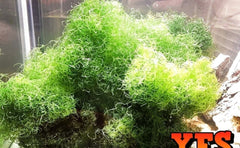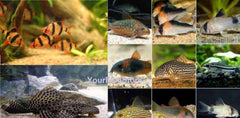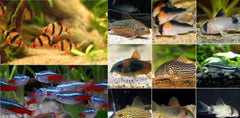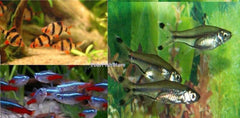X4 Cinnamon Clown Fish Package - Amphiprion Rubrocinctus

Materials Used: An insulated box and heat/cool packs (according to ambient temperatures) will keep the fish comfortable until they arrive to you.
In the case of “Dead on Arrival” you must .
*********************************************************************
x4 CINNAMON CLOWNFISH PACKAGE - AMPHIPRION RUBROCINCTUS - FREE SHIPPING
Approx: 1 1/2" - 2 1/2" Each
Minimum Tank Size: 30 gallons
Care Level: Easy
Temperament: Semi-aggressive
Reef Compatible: Yes
Water Conditions: 72-78° F, dKH 8-12, pH 8.1-8.4, sg 1.020-1.025
The adult Cinnamon Clownfish Amphiprion melanopus looks as if it is bathed in spice. Most will be red or dull reddish brown with black on the body, pelvic and anal fins. The dorsal and pectoral fins are reddish orange and the tailfin is yellow. They will have either a blue or white head bar. Juveniles are a burnt orange color overall with three bars, but two of them will fade as they mature.
Depending on the locations where they originate from there are some variations in adult coloration. These individuals range from reddish orange overall with no black on the body to simply having a black spot. Some may also have red pelvic and anal fins, and the bar on the head may be missing. These color forms are more rare in the hobby, yet with all this variability this species has been dubbed with a number of common names. These include Dusky Anemonefish, Red and Black Anemonefish, Blackback Anemonefish, Black Anemonefish, Fire clownfish, and simply Melanopus Anemonefish.
The Cinnamon Clownfish belongs to a group of anemonefish known as the "Tomato Complex". Its close relative the Tomato Clownfish Amphiprion frenatus is a popular member of this group. In contrast to it, the Cinnnamon Clownfish are not as brilliantly colored, nor are they as big. Female Tomato Clowns can reach up to 5 1/2" (14 cm) in length while a Cinnamon female will only grow to about 4.7", and males are .4 to .8" (1-2 cm) smaller. These anemonefish are also about an inch smaller than most of the Clarkii Complex clownfish. But like the Clarkii anemonefish, they are also are known to wander further away from their host anemone.
In the wild, their preferred anemone host is the colonial type of Bubble Tip Anemone Entacmaea quadricolor. These are an anemone that splits fairly often and then they hang out together. Large male/female pairs are found in the center of the colonies with smaller juveniles hiding from the dominant pair on the outer edges. They are known to even chase Clark’s Clownfish out of their anemone temporarily. Not because the Cinnamon Clownfish wants the anemone, but just because they are in the neighborhood. In the aquarium they are very aggressive if kept with an anemone, and will even "bite the hand that feeds them!"
These clowns are easy to care for and make a great fish for beginners and experts alike. There are no real complicated habitat set ups that are needed. Provide them with a tank that is at least 30 gallons for one, and 40 gallons or more will be needed for a pair or if you are going to want to add other fish to the tank. They are also great in the reef aquarium. With or without an anemone, they will need live rock, properly sized power heads, a skimmer is suggested on a larger tank. and regular water changes. Provide an area in the tank where the water is calm so they can feed easily.
These are some of those bullet-proof clownfish. They have been known to survive tank crashes and easily respond to medication for various illnesses. Do not house them with very passive companions in smaller tanks. They will harass peaceful gobies and other similar fish. In a larger tank, add the Cinnamon Clownfish first and then you can house them with aggressive fish like Triggers and large Angelfish. They should not be housed with dottybacks, but line wrasses are okay in large tanks. Although aggressive, they don’t tend to bother with other fish unless the tankmates get too close to their anemone. They can be kept singly or as a male/female pair, but it is not a good idea to put other clownfish in with them since they will be attacked.

QUESTIONS & ANSWERS
Have a Question?
Be the first to ask a question about this.














